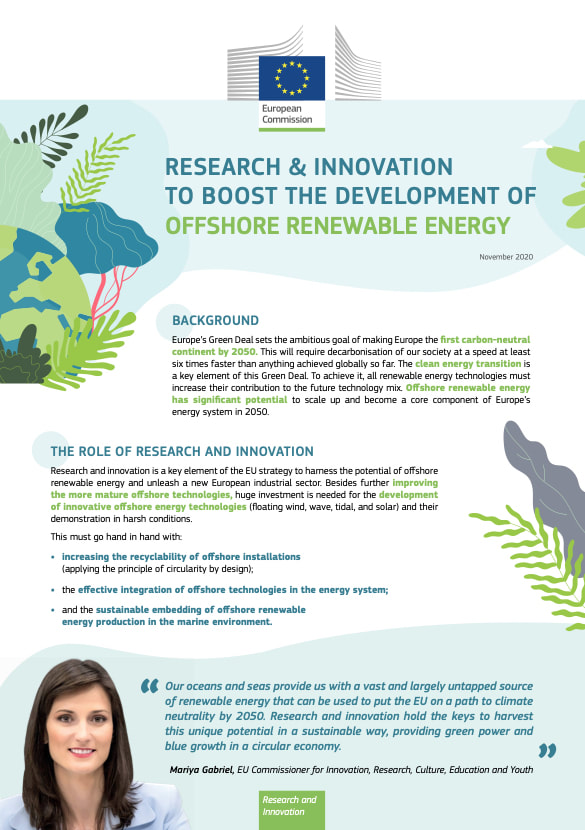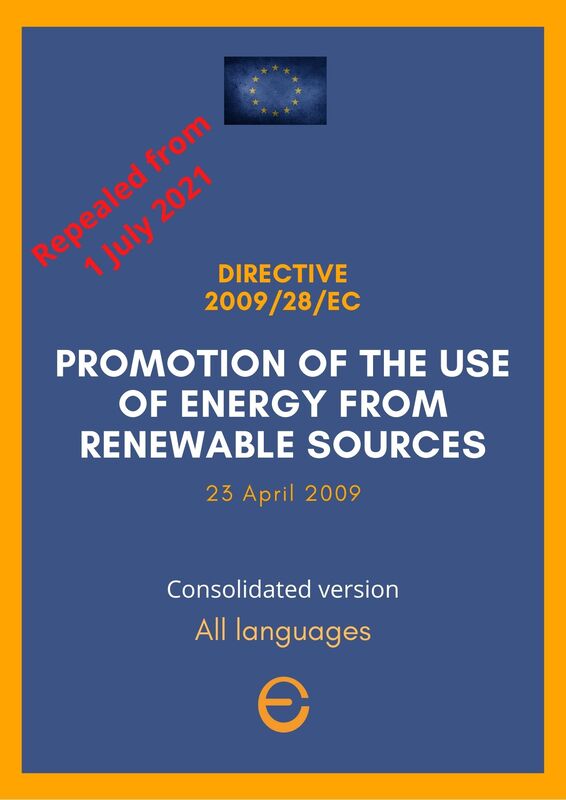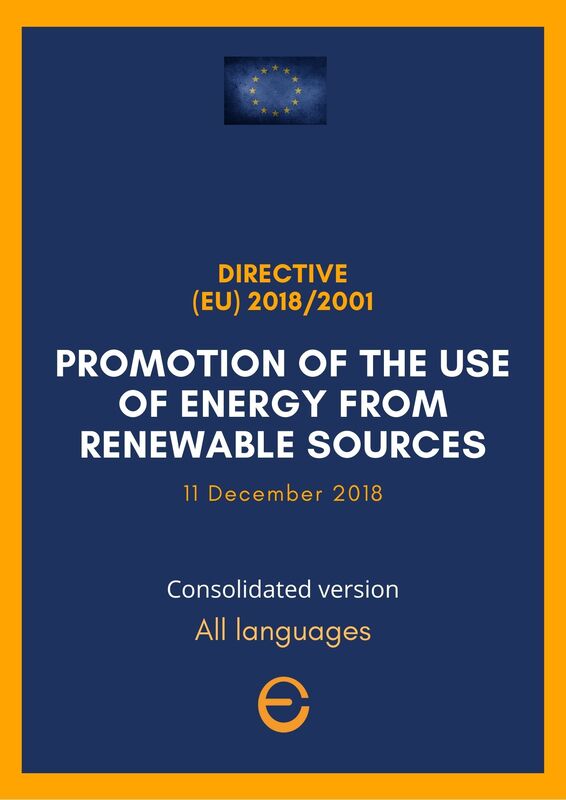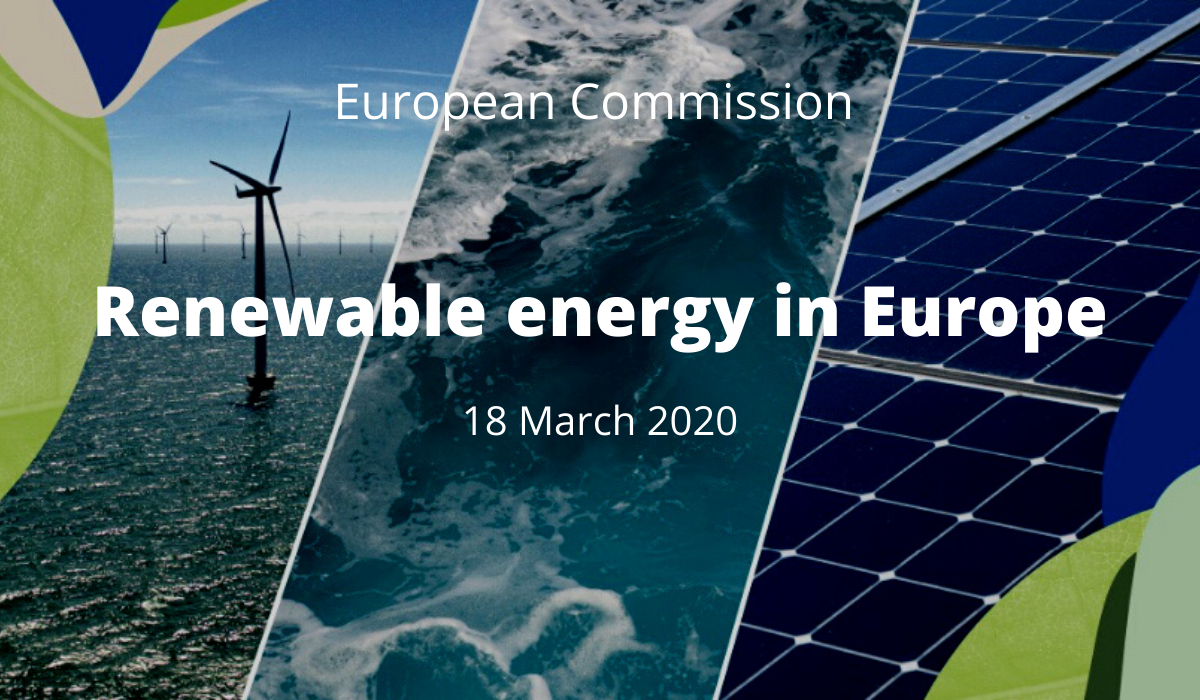Ocean and hydropower
|
Seas and oceans have a vast renewable energy resources. EU promotes the clean exploitation of these resources because they can contribute to the decarbonisation of the EU target by 2050. Last estimated indicates that these sources of energy can contribute around 10% of EU power demand by 2050. A - Ocean energy There are various technologies to harness the energy potential of the oceans. Wave and tidal converters can be effectively used to transform the energy of the seas into mechanical energy and then into electrical energy. Or by exploiting the different gradients (saline and or thermal) and the chemical energy contained in them to convert it into electricity. Or energy of marine currents. These technologies can help achieve Europe's energy and climate goals. They are technologies still in an emerging phase, but they have the potential to provide constant and predictable energy production and can rely on existing technologies from shipbuilding, wind and hydroelectric power generation, etc. Over the past ten years, tidal stream and wave devices - on different scales - have been tested in European waters. However, only a few examples can be found today of ocean energy systems in operation. Considerable progress is needed - in research, development, demonstration and validation of the technology - for this sector to realise its potential contribution to energy supply, industrial leadership, economic growth and mitigation of climate change. In particular, progress is needed in design and validation of ocean energy devices, balance of plant (supporting components and auxiliary systems), logistics and marine operations, integration in the energy system, and modelling tools. The EU, its Member States, and the private sector have invested more than €4 billion over the last ten years into research and pilot projects on ocean energy. Their focus has been on demonstrating the reliability of ocean technologies and their capacity to survive in aggressive sea conditions, thereby reducing the risk for project developers and investors. Through the Strategic Energy Technology (SET) Plan, the EU has set cost-reduction targets on ocean technologies for the next decade. For tidal stream technologies, the costs should come down to €0.15 per kWh by 2025 and €0.10 per kWh by 2030, and for wave energy to €0.20 per kWh by 2025 and €0.15 per kWh by 2030. The first areas that could benefit from ocean technologies are offshore installations and islands that today have high electricity costs. In 2018 EU released the Renewable Energy Directive 2018/2001/EU, as part of the Clean energy for all Europeans package, aimed at keeping the EU a global leader in renewables and, more broadly, helping the EU to meet its emissions reduction commitments under the Paris Agreement. The directive sets a new binding renewable energy target for the EU for 2030 of at least 32%, with a clause for a possible upward revision by 2023, and includes measures for different sectors to achieve it. Among the new provisions:
Most of the other elements of the new directive have to be transposed into national law by the Member States by 30 June 2021, when the original Renewable Energy Directive will be repealed. The directive:
|
The ongoing recast of the Directive 2018/2001 on Renewable Energy
|
With the European Green Deal, that is the European Strategic Climate Plan, the EU aims to become the first climate-neutral continent by 2050. To achieve this, the EU is committed to making existing legislation suitable for a reduction. emissions by 55% by 2030. It is therefore necessary to review the existing legislation, so that renewable energy fully contributes to the achievement of the 2030 targets, in line with the 2030 Climate Target Plan, and to support the implementation of the vision outlined in the system integration strategies. energy and hydrogen, adopted on 8 July 2020. |
The EU wants to build an integrated energy system suitable for climate neutrality and introduce the use of hydrogen to contribute to these goals.
As a first step in the process of revising the Renewable Energy Directive, the Commission published a roadmap on 3 August 2020 and opened a seven-week period for public feedback on the concept. The feedback is then used in the Commission's further preparatory work for the revision of the directive.
The Commission launched a public consultation to review renewable energy rules on 17 November 2020, open for input until 9 February 2021.
In addition, a stakeholder meeting was organized on 11 December 2020 to collect first stakeholder input on the public consultation (Agenda)
As a first step in the process of revising the Renewable Energy Directive, the Commission published a roadmap on 3 August 2020 and opened a seven-week period for public feedback on the concept. The feedback is then used in the Commission's further preparatory work for the revision of the directive.
The Commission launched a public consultation to review renewable energy rules on 17 November 2020, open for input until 9 February 2021.
In addition, a stakeholder meeting was organized on 11 December 2020 to collect first stakeholder input on the public consultation (Agenda)





